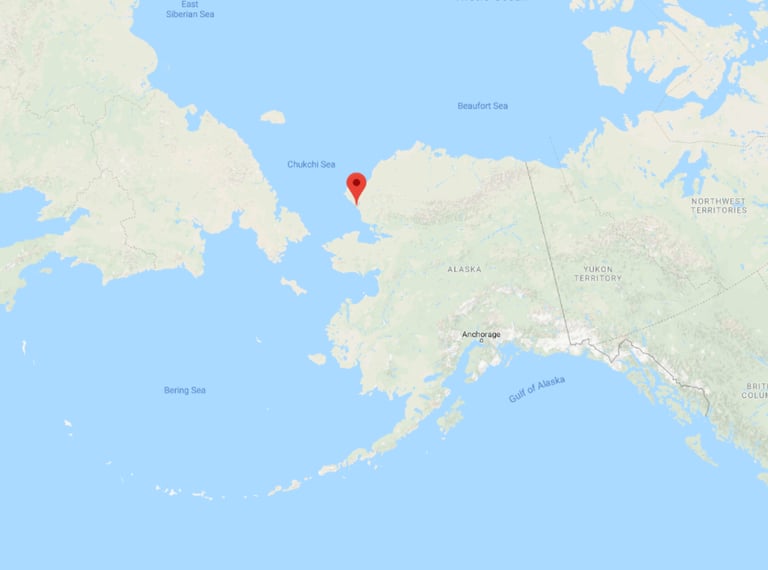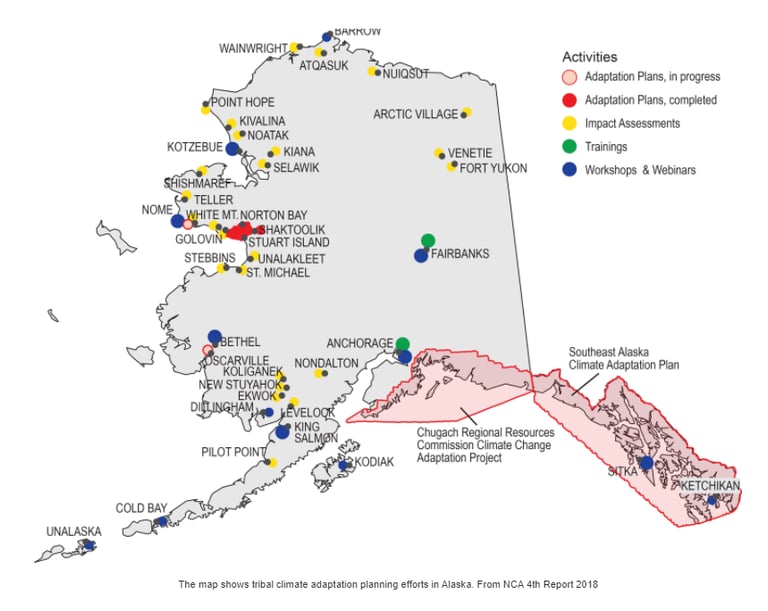[ARCHIVE] Kivalina - Alaskan town's road to relocation
Originally published Dec 7, 2018
Alaska is the largest state in the US, being almost twenty percent of the landmass of the other combined 49 states. As the only state in the Arctic circle, it is prone to far faster climate change than the others. Life in Alaska varies considerably from elsewhere in the US. Forty percent of the federally recognised indigenous tribes in the US (229 of 566) call Alaska home. It is also home for a wealth of wildlife - millions of birds, thousands of caribou, salmon, and migrating whales. As such, climate change threatens the fauna and ecosystems as well as the the health, culture, infrastructure and lives of the indigenous communities.
The recently published 4th National Climate Assessment, a collaborative report from various US governmental departments, seeks to give a detailed picture on the state of the climate in the US. Alaska, having experienced warming of twice the rate of the rest of the United States, contains many vulnerable communities. Coastal communities in particular, who face the added threats of melting sea ice, coastal erosion and sea level rise, are now fighting to save their homes and livelihoods.
Kivalina: a case for combating climate change.
Kivalina, home to a small Iñupiaq community of around 450, is a northwest Alaskan town that is fast disappearing.
The U.S. Climate Resilience Toolkit summarises the multitudinous ways that climate change is affecting life for residents.
Residents were protected from storm surges by the formation of sea ice in the Autumn. This formation no longer occurs early enough to stop homes being flooded. When the sea ice eventually forms, it is thinner than before, with snow-covered holes in the ice. This makes travel and hunting across the ice a more dangerous affair. Residents have become largely unable to hunt for large sea mammals due to the unstable sea ice. When hunting for land mammals, residents have to deal with a reduced number of caribou due to their changing migratory patterns and a declining fish population in a nearby river serves to compound the food insecurity that Kivalina is experiencing. Thawing of permafrost in the riverbank is causing an increase in river sediment. This makes it more difficult to treat the community's water supply. The irregular thawing is also detrimental to the storing of Caribou and whale meat in natural ice freezers.




More than just a home
This video portrait (below) concerning the changes that the town is facing, really brings home the reality and severity of how climate change is affecting the daily lives, traditions and happiness of
the townsfolk. Kivalina has a high suicide rate. According to Whaling Captain Enoch Adams Jr. the changing landscape, diminishing water and food security, and loss of housing play a contributing role.
The formerly perennial sea ice has been formative in Iñupiaq culture and traditions, and is moreover critical to the survival and livelihood of the town. With its disappearance imminent, the town has turned to relocation.

Kivalina's road to relocation
The community is in the process of planning a permanent relocation of their population. This could cost up to $400 million, almost a million per resident. The longer the relocation takes, the more this will eventually cost. Plans to build an evacuation road for use during storm surges and a new school on a hill seven miles inland are underway. Kivalina has received a $500,000 grant from Re-Locate, and is seeking more support from the global community.
Five villages have the same climate change issues, some worse than ours. If you do this project in Kivalina, you do this work for them. They would all benefit from this in their villages.”
Kivalina Native Village Council President Millie Hawley noted that the relocation effort
"belongs to the people of Kivalina. We’ll visualize where we’re at, where we can be, and how we can move in that direction. There are 229 Tribes in Alaska. Five villages have the same climate change issues, some worse than ours."
This is not an isolated case. As can be seen in the figure above, there are many communities that have all begun adaptation efforts in some sense - and this is only going to increase.

